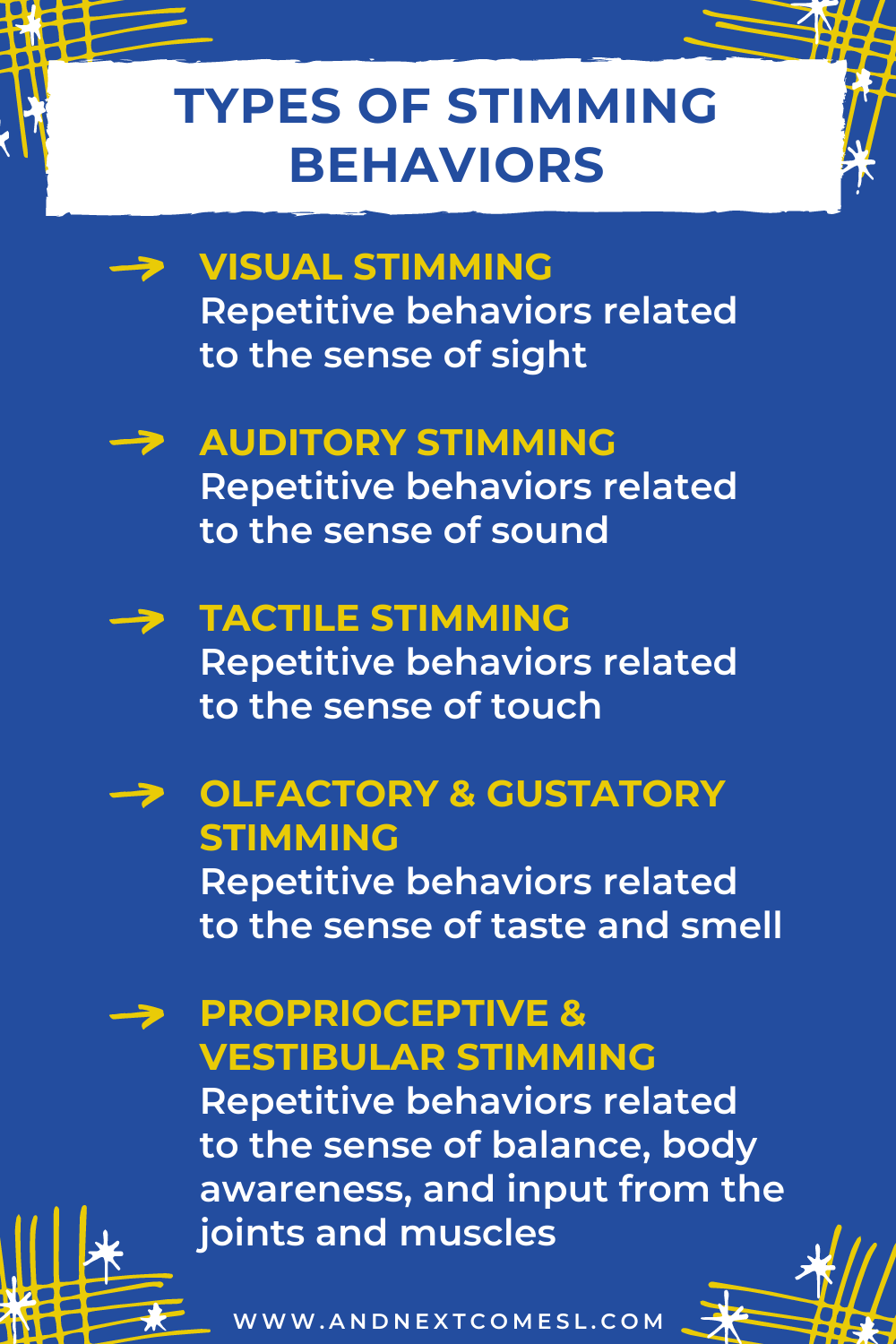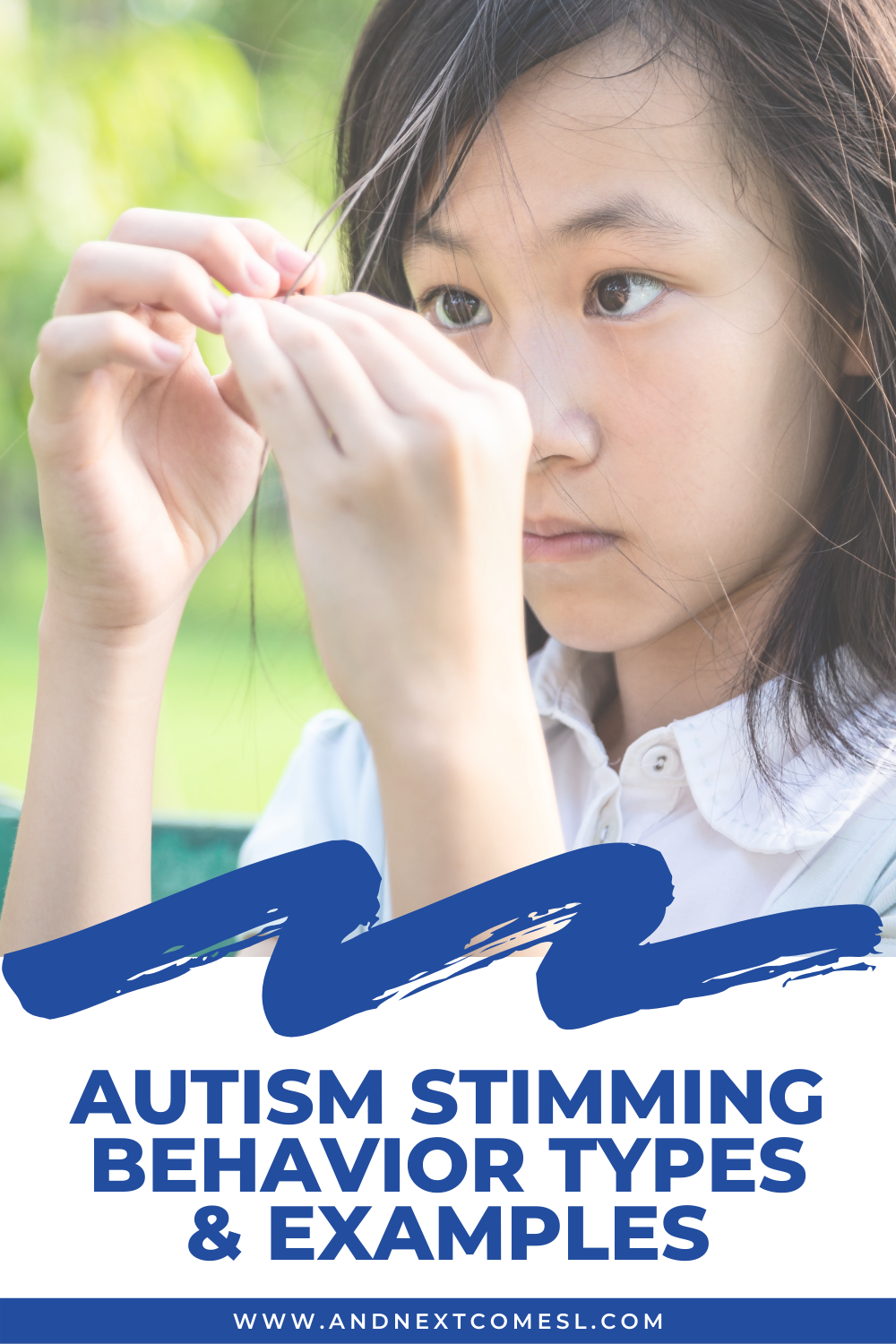Many autistic children stim. So do autistic adults. However, stimming is something that is often misunderstood and pathologized in autism.
Autistic or not, we all stim to a degree. So instead of trying to decrease stimming behaviors, we should be trying to better understand stimming in general. We should be learning about the types of stimming, its purpose, and its benefits. Yes, stimming does serve a purpose and have many benefits.
And we should be teaching our autistic children to understand their own stimming behaviors. By the way, I have a social story for that.
So let's take a closer look at stimming behaviors. What are the different types? What are some common examples? Well, that's what we'll examine below.
But First, What are Stimming Behaviors?
As described in more detail here, stimming refers to repetitive self-stimulating behaviors. It can be used to describe repetitive movements, sounds, words, and/or actions. Although it's common in autistic people, stimming is not exclusive to autism.
Often these repetitive behaviors are just called a stim for short. So you might see that term used as well.
Stimming is helpful for autistic individuals in a lot of ways, especially in terms of regulation. So it's important not to discourage your autistic child's stimming. Unless of course their stim is harmful or damaging. Learn more about your autistic child's stimming here.
There are lots of different types of stimming in autism. And many parents have questions about what is or isn't considered a stim. So let's take a closer look at the types of stimming in autism, as well as some common examples of stimming in autism.
Types of Stimming in Autism
Remember how we can receive different types of sensory input from any of our eight senses? Well, you can also find different types of stimming in autism to match these senses. So let's take a closer look at these different types.
Visual Stimming
This type of stimming has to do with the sense of sight. It can include things such as moving fingers in front of your eyes, looking at ceiling fans, watching objects spin, or excessive or hard blinking.
Auditory Stimming
This type of stimming is all about the sense of sound. It can include listening to the same sounds or songs repeatedly. It can also refer to making sounds or repeating words and phrases. Vocal stimming would fall into this category.
Tactile Stimming
This type of stimming is all about the sense of touch. It can include stroking particular fabrics, rubbing the skin, or picking at scabs.
Olfactory/Smell & Gustatory/Taste Stimming
These types of stimming are all about the sense of taste and smell. It can include licking things, sniffing things, and mouthing objects.
Proprioceptive & Vestibular Stimming
This type of stimming is all about the sense of balance, body awareness, and input from the joints and muscles. It can include spinning, rocking, jumping, or cracking knuckles.
Common Examples of Autistic Stimming Behaviors
Now let's take a closer look at some specific examples of stimming behaviors common to autism to give you a better idea of what stimming can look like. Some common stims include:
- Lining up toys or rearranging objects
- Rocking back and forth
- Spinning in circles
- Flapping hands
- Repetitive or hard blinking
- Pacing
- Chewing or mouthing objects
- Flicking, snapping, tapping, or drumming fingers
- Cracking knuckles or other joints
- Humming or whistling
- Singing the same song repeatedly
- Clapping
- Spinning objects
- Clearing throat or coughing repetitively
- Opening and closing doors
- Flicking light switches on and off
- Clenching fists
- Tapping a pencil
- Twirling or pulling hair
- Walking on tiptoes
- Repeating words, phrases, or sounds
- Biting fingernails
- Moving or waving fingers in front of eyes
- Rubbing, scratching, or picking at skin
- Picking at scabs or sores
- Bouncing leg or foot
- Moving toes
- Sniffing things
- Head banging or dragging head on the floor
- Licking things
- Rubbing or stroking particular types of objects, fabrics, or surfaces
- Bouncing, jumping, or twirling
- Staring at rotating objects (e.g., ceiling fans)
- Punching
- Biting
- Staring at a visual










